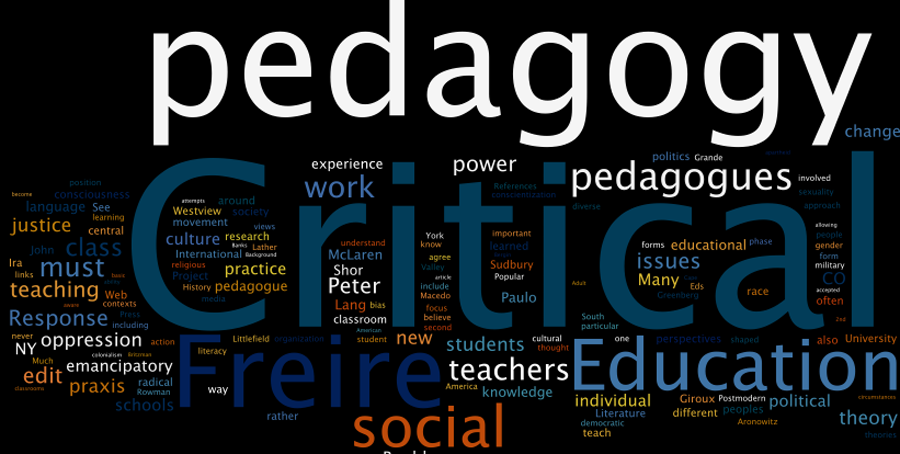Critical pedagogy is an educational philosophy and teaching approach that seeks to empower students by encouraging critical thinking, social awareness, and active participation in shaping society. Rooted in the ideas of Paulo Freire, bell hooks, and Henry Giroux, critical pedagogy challenges traditional, passive learning methods and promotes education as a tool for liberation and social justice.
By questioning dominant power structures and encouraging dialogue, critical pedagogy transforms classrooms into spaces of inquiry, activism, and meaningful learning. This article explores the principles, benefits, challenges, and strategies for implementing critical pedagogy in modern education.
What is Critical Pedagogy?

🔹 Critical pedagogy is an educational approach that encourages students to analyze and challenge societal structures through learning.
🔹 It aims to:
- Develop critical consciousness – Students become aware of social, political, and economic issues.
- Promote active learning – Students engage in discussion, questioning, and problem-solving.
- Empower marginalized voices – Recognizes the importance of diverse perspectives and lived experiences.
- Encourage action for social change – Education is seen as a means of transforming society, not just acquiring knowledge.
Origins & Key Thinkers in Critical Pedagogy
1. Paulo Freire (1921–1997) – The Father of Critical Pedagogy
📖 Pedagogy of the Oppressed (1970) – Argues that traditional education reinforces oppression and must be replaced with dialogue-based learning.
🔹 Problem-Posing Education – Students and teachers co-create knowledge through discussion.
🔹 Rejecting the “Banking Model” – Learning should not be memorization-based, but interactive and transformative.
📜 Famous Quote:
“Education either functions as an instrument to bring about conformity or as a means of enabling people to become critical and creative thinkers.”
2. bell hooks (1952–2021) – Teaching for Liberation
📖 Teaching to Transgress (1994) – Advocates for education as a practice of freedom, emphasizing intersectionality, race, gender, and social justice in teaching.
🔹 Encourages engaged pedagogy – Learning should be interactive, inclusive, and centered on students’ lived experiences.
📜 Famous Quote:
“The classroom remains the most radical space of possibility in the academy.”
3. Henry Giroux (1943–Present) – Education as Resistance
📖 Theory and Resistance in Education (1983) – Argues that schools should be sites of resistance against inequality.
🔹 Promotes media literacy and critical thinking to challenge political and economic power structures.
📜 Famous Quote:
“Education is central to politics because it provides the conditions for individuals to think critically and act courageously.”
Key Principles of Critical Pedagogy
1. Education as a Tool for Liberation
📢 Learning should empower students to recognize and challenge oppressive systems in society.
2. Dialogue & Student-Centered Learning
🗣 Students should actively participate in discussions, rather than passively receiving knowledge.
3. Social Justice & Equity in Education
🌎 Education must address systemic inequalities (race, gender, class, and power dynamics).
4. Encouraging Critical Thinking & Inquiry
🔎 Students should question social norms, analyze media, and develop independent perspectives.
5. Bridging the Gap Between Theory & Action
🛠 Learning must lead to real-world activism, advocacy, and societal engagement.
Benefits of Critical Pedagogy
1. Empowers Students as Agents of Change
- Encourages students to think for themselves and take action.
- Develops leadership, civic engagement, and problem-solving skills.
2. Promotes Inclusive & Equitable Classrooms
- Recognizes diverse backgrounds and voices.
- Challenges Eurocentric, patriarchal, or elitist narratives in education.
3. Develops Higher-Order Thinking Skills
- Encourages analysis, synthesis, and evaluation, rather than rote memorization.
- Helps students connect knowledge to real-life social and political issues.
4. Encourages Lifelong Learning & Social Awareness
- Teaches students to be critical consumers of media and information.
- Prepares students to engage with global and local social issues.
Challenges in Implementing Critical Pedagogy
- Resistance from Traditional Institutions – Many education systems favor standardized testing over critical thinking.
- Political Pushback – Some critics view critical pedagogy as “too radical” or politically biased.
- Teacher Training Gaps – Many educators are not trained in facilitating open-ended dialogue or social justice education.
- Classroom Dynamics & Student Readiness – Some students may be hesitant to engage in deep political discussions.
✅ Solutions:
- Provide teacher training on critical pedagogy methods.
- Encourage open dialogue while respecting diverse opinions.
- Integrate critical thinking exercises into all subjects.
How to Apply Critical Pedagogy in the Classroom
1. Encourage Open Dialogue & Debate
🎙 Use Socratic seminars, debates, and student-led discussions to explore complex issues.
2. Challenge Traditional Narratives
📖 Introduce diverse perspectives in literature, history, and social studies.
🔍 Ask students to analyze how power is portrayed in textbooks and media.
3. Use Real-World Case Studies
🌍 Connect lessons to current events, social justice movements, and historical struggles.
📡 Teach media literacy and fact-checking skills.
4. Foster a Student-Centered Learning Environment
📝 Let students co-create class projects based on their interests.
🛠 Encourage hands-on, project-based learning focused on real-world challenges.
5. Promote Community Engagement & Activism
🤝 Partner with local organizations for service-learning projects.
📢 Encourage students to write, advocate, or participate in community activism.
Real-World Applications of Critical Pedagogy
🏫 In Schools – Teaching about racism, climate change, wealth inequality, and human rights.
🎭 In Art & Media – Encouraging students to analyze films, music, and literature through a critical lens.
⚖️ In Civic Engagement – Promoting youth activism and democratic participation.
Final Thoughts: Education as a Force for Change
Critical pedagogy is more than a teaching method knowledge—it’s a philosophy that empowers students to challenge injustice, think independently, and become active participants in shaping society. By fostering critical thinking, dialogue, and action, education becomes a transformative force for individual and collective growth.
✨ How do you incorporate critical pedagogy in your learning or teaching? Share your thoughts below! 🎓📢🔥


